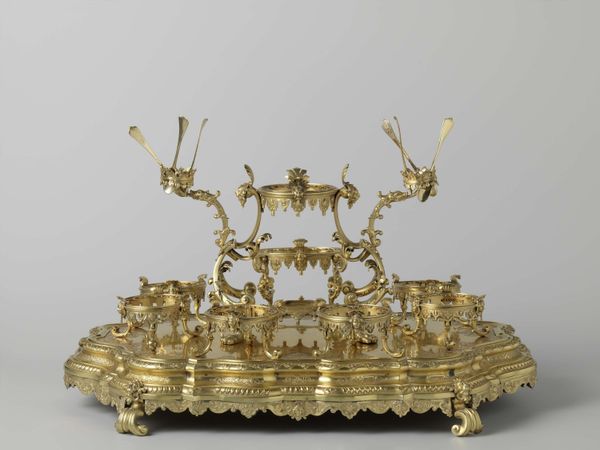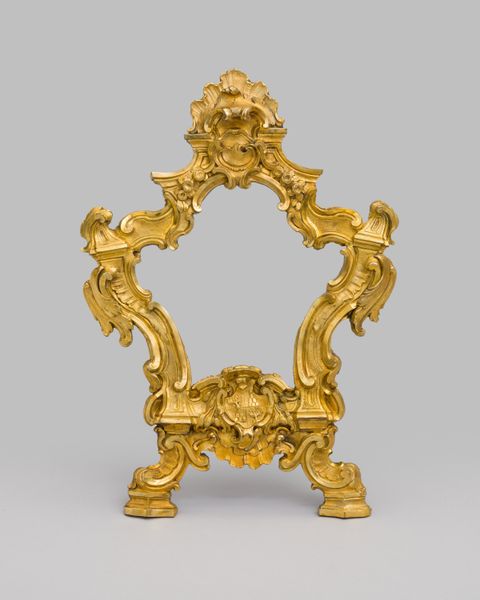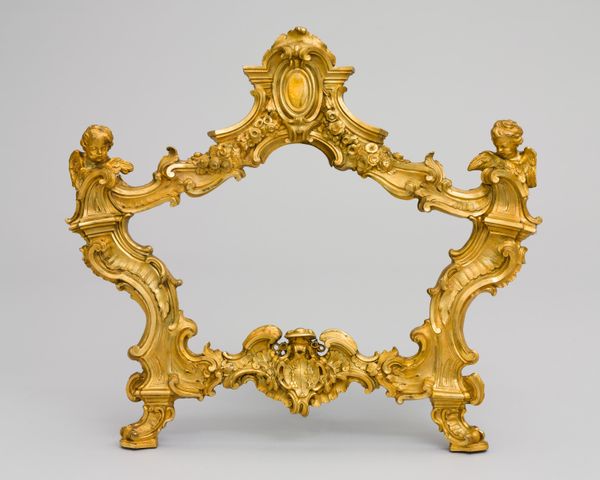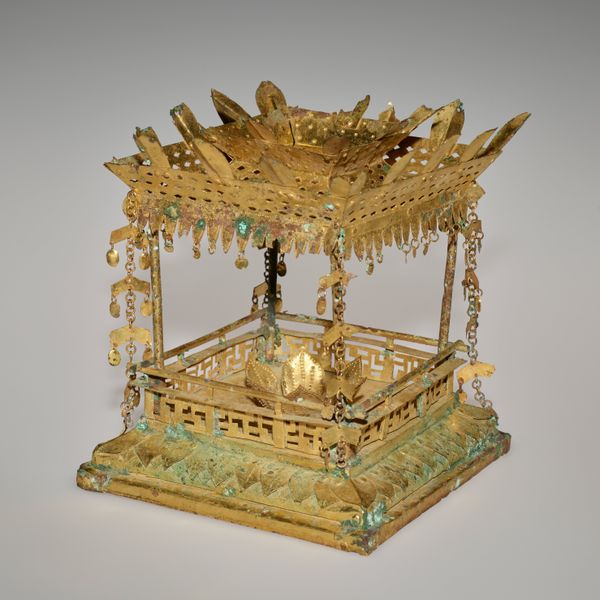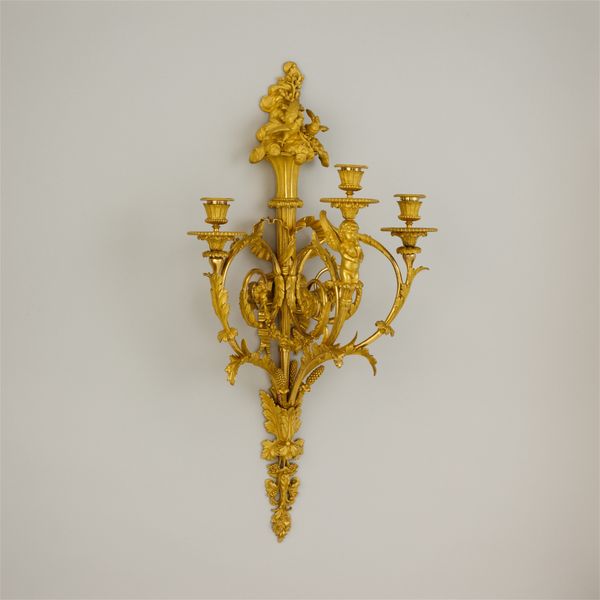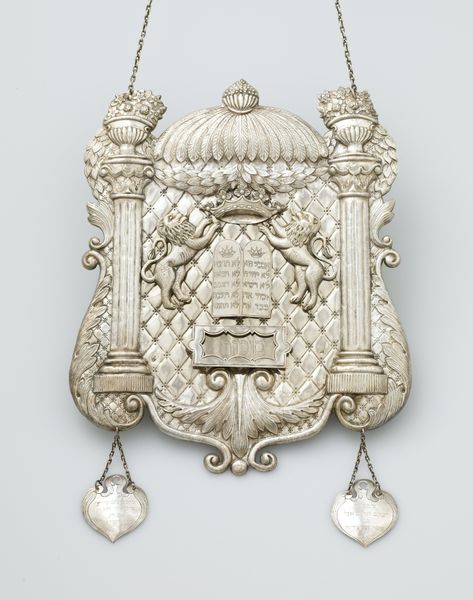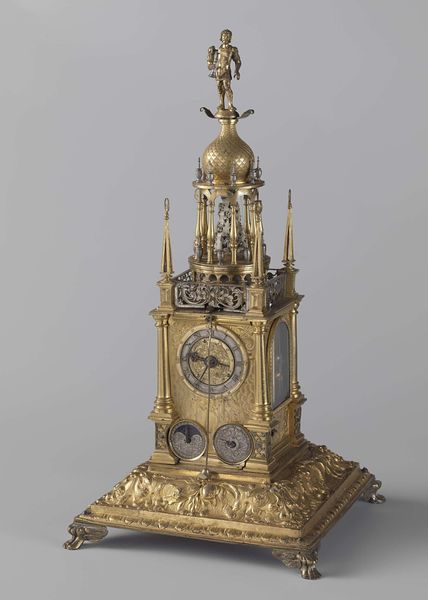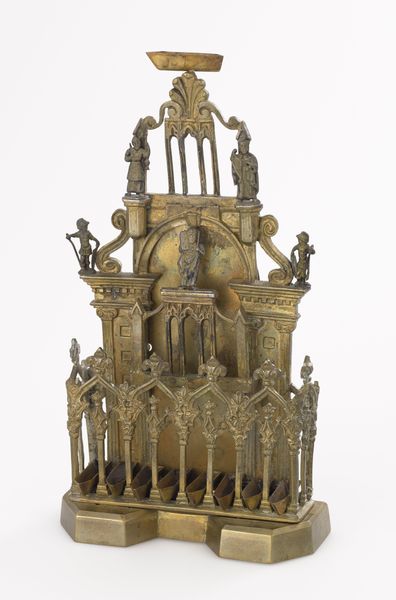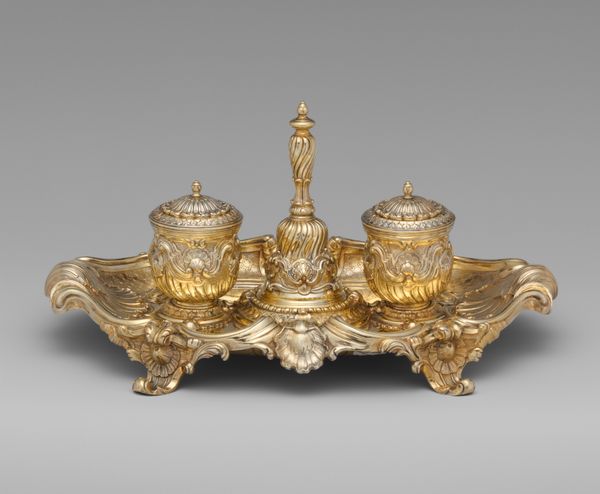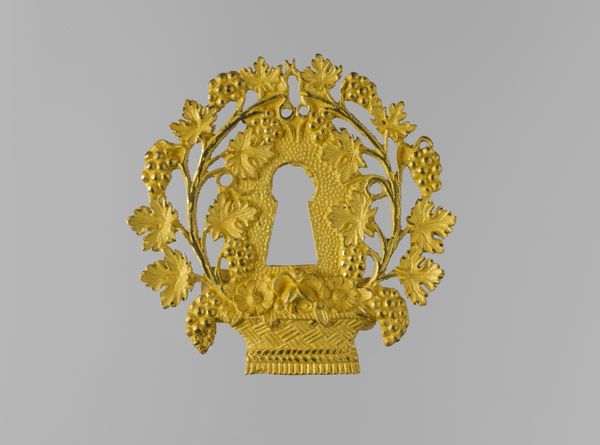
bronze, sculpture
#
bronze
#
sculpture
#
decorative-art
#
rococo
Dimensions: 30.5 × 43.5 × 24.5 cm (12 × 17 × 9 3/4 in.)
Copyright: Public Domain
Curator: What an extraordinary piece! This bronze sculpture, titled "Table Centerpiece," was crafted in 1768 by D.R. Gastecloux, embodying the Rococo style. Editor: My first thought is, wow, decadence! The intricate gold color and architectural details practically shout wealth and privilege. Curator: Indeed. Centerpieces like this were designed to showcase affluence, transforming dining tables into miniature displays of power. It’s impossible to divorce the piece from the socio-economic disparities of the 18th century. Editor: Exactly. Who would even own something like this? Imagine the number of struggling families in Europe at the time, versus the extravagance on display in one wealthy household's dining room. The material and labor required were astronomical. Curator: And Rococo, as a style, reveled in ornamentation and asymmetry, moving away from the more rigid formalism of the Baroque period. Look closely at how Gastecloux incorporates classical architectural elements—domes, balustrades—but transforms them with a lighter, more playful touch. Editor: Playful maybe, but still potent with ideological implications! Pieces like this actively reinforced social hierarchies. This isn't simply decorative; it's a statement. Every flourish is a deliberate declaration of status. Curator: I can appreciate the technical skill that created it. To manipulate bronze in such a way is simply stunning craftsmanship. The chasing and gilding...it must have taken teams of artisans. The piece demonstrates command over materials and labor. Editor: And that’s precisely the point. The craftsmanship highlights a troubling division of labor, of the elites at the time extracting the skilled manual labor of many. In the twenty-first century, objects like this need to function as stark reminders of inequality. Curator: Perhaps. Although I do see the inherent beauty and technical sophistication, but it makes the world in which it was conceived problematic. Editor: Definitely. We can admire the artistry, while maintaining awareness of its place in social power dynamics.
Comments
No comments
Be the first to comment and join the conversation on the ultimate creative platform.

